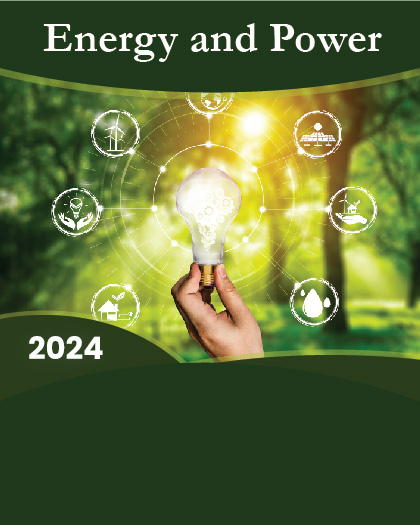1. Preface
1.1. Objectives of the Study
1.2. Market Segmentation & Coverage
1.3. Years Considered for the Study
1.4. Currency & Pricing
1.5. Language
1.6. Stakeholders
2. Research & Forecasting
2.1. Research Methodology
2.1.1. Research Process
2.1.2. Research Framework
2.1.3. Research Reliability & Validity
2.1.4. Research Assumptions
2.2. Forecasting Methodology
3. Executive Summary
3.1. Market Outlook
3.2. Market Data Feed
4. Premium Insight
4.1. Market Connectivity
4.2. Market Dynamics
4.2.1. Drivers
4.2.2. Restraints
4.2.3. Opportunities
4.2.4. Challenges
4.3. Porters Five Forces Analysis
4.3.1. Threat of New Entrants
4.3.2. Threat of Substitutes
4.3.3. Bargaining Power of Customers
4.3.4. Bargaining Power of Suppliers
4.3.5. Industry Rivalry
4.4. Client Customizations
5. Global Battery Energy Storage System Market, by Technology
5.1. Overview
5.2. Market Sizing & Forecasting
5.3. Flow Batteries
5.4. Lead-acid Batteries
5.5. Lithium-ion Batteries
5.6. Sodium-sulfur Batteries
6. Global Battery Energy Storage System Market, by Connection Type
6.1. Overview
6.2. Market Sizing & Forecasting
6.3. Off-grid Connection
6.4. On-grid Connection
7. Global Battery Energy Storage System Market, by Application
7.1. Overview
7.2. Market Sizing & Forecasting
7.3. Non-residential
7.4. Residential
7.5. Utilities
8. Global Battery Energy Storage System Market, by Geography
8.1. Overview
8.2. Market Sizing & Forecasting
8.3. Americas
8.3.1. Argentina
8.3.2. Brazil
8.3.3. Canada
8.3.4. Chile
8.3.5. Mexico
8.3.6. United States
8.4. Asia-Pacific
8.4.1. Australia
8.4.2. China
8.4.3. India
8.4.4. Indonesia
8.4.5. Japan
8.4.6. Malaysia
8.4.7. Philippines
8.4.8. South Korea
8.4.9. Thailand
8.5. Europe, Middle East & Africa
8.5.1. Denmark
8.5.2. France
8.5.3. Germany
8.5.4. Italy
8.5.5. Netherlands
8.5.6. Qatar
8.5.7. Russia
8.5.8. Saudi Arabia
8.5.9. South Africa
8.5.10. Spain
8.5.11. United Arab Emirates
8.5.12. United Kingdom
9. Competitive Landscape
9.1. FPNV Positioning Matrix
9.1.1. Quadrants
9.1.1.1. Forefront
9.1.1.2. Pathfinders
9.1.1.3. Niche
9.1.1.4. Vital
9.1.2. Business Strategy
9.1.2.1. Business Growth
9.1.2.2. Industry Coverage
9.1.2.3. Financial Viability
9.1.2.4. Channel Support
9.1.3. Product Satisfaction
9.1.3.1. Value for Money
9.1.3.2. Ease of Use
9.1.3.3. Product Features
9.1.3.4. Customer Support
9.2. Market Vendor Ranking Analysis
9.3. Competitive News Feed Analysis
10. Company Usability Profiles
10.1. ABB
10.1.1. Overview
10.1.2. Strategy
10.1.3. SWOT
10.2. General Electrical
10.2.1. Overview
10.2.2. Strategy
10.2.3. SWOT
10.3. LG Chem
10.3.1. Overview
10.3.2. Strategy
10.3.3. SWOT
10.4. Panasonic
10.4.1. Overview
10.4.2. Strategy
10.4.3. SWOT
10.5. Samsung SDI
10.5.1. Overview
10.5.2. Strategy
10.5.3. SWOT
10.6. AEG Power Solutions
10.7. Hitachi
10.8. NEC
10.9. Siemens AG
10.10. Tesla
11. Appendix
11.1. Discussion Guide
11.2. Additional Competitive News Feed
11.3. Competitive Strategic Window
11.3.1. Leverage Zone
11.3.2. Vantage Zone
11.3.3. Speculative Zone
11.3.4. Bottleneck Zone
11.4. Top Reports
11.4.1. Global Crane Rental Market
11.4.2. Global Computer Vision Market
11.4.3. Global Payment Gateway Market
11.4.4. Global B2B Travel Market
11.4.5. Global Varicose Vein Treatment Devices Market
11.5. Author Details























